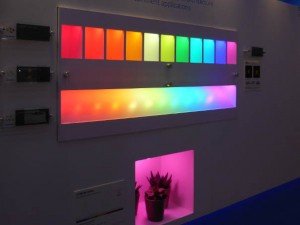stardustsailor
Well-Known Member
It came to me ..
Another one of my most crazy ideas ....
1) We are not aware who actually is reading our posts ....
2) As the cannabis cultivation moves towards a better legally termed state ,
the more the different markets around this act ,will populate ,
at the same time they will be while taking more " direct initiatives " towards satisfying the market needs ...
HEy ...
We 'pretty much have a "voice " here ...
So here's our wish list .....
As being the one openin' this thread ,please allow me to express my wish ,first..
To :OSRAM
Topic : Monochromatic Chip-On-Board L.E.D. array for Horticultural purposes ...
Something like a Vero 29 ...
A lot like it ...
Plastic case with mounting holes ..
Aluminium substrate ...
Same large L.E.S. ...
About ~ 150- 160 diodes under it ...
BUT ....
The diodes are going to be the same like the ones the Oslons are using ....
660 nm red +450 nm blue + 730 nm far-red ...
With transparent ( non phosphor doped ,of course ) flat silicone (LES )
and not those silly silicone dome lenses ,Oslons have , that pop off ,so easily ...
Does not this sound as a good idea ?
We do not need monochromatic LED fixtures ...
Just give us those " OSLON " monochromatic combo COBs ,those ones ,
the ones for horticultural purposes ..
We'll be waiting for them ....
Thank you.
With respect ,
Stardustsailor .
Another one of my most crazy ideas ....
1) We are not aware who actually is reading our posts ....
2) As the cannabis cultivation moves towards a better legally termed state ,
the more the different markets around this act ,will populate ,
at the same time they will be while taking more " direct initiatives " towards satisfying the market needs ...
HEy ...
We 'pretty much have a "voice " here ...
So here's our wish list .....
As being the one openin' this thread ,please allow me to express my wish ,first..
To :OSRAM
Topic : Monochromatic Chip-On-Board L.E.D. array for Horticultural purposes ...
Something like a Vero 29 ...
A lot like it ...
Plastic case with mounting holes ..
Aluminium substrate ...
Same large L.E.S. ...
About ~ 150- 160 diodes under it ...
BUT ....
The diodes are going to be the same like the ones the Oslons are using ....
660 nm red +450 nm blue + 730 nm far-red ...
With transparent ( non phosphor doped ,of course ) flat silicone (LES )
and not those silly silicone dome lenses ,Oslons have , that pop off ,so easily ...
Does not this sound as a good idea ?
We do not need monochromatic LED fixtures ...
Just give us those " OSLON " monochromatic combo COBs ,those ones ,
the ones for horticultural purposes ..
We'll be waiting for them ....
Thank you.
With respect ,
Stardustsailor .





 .
.
